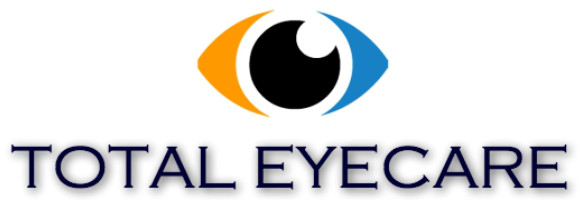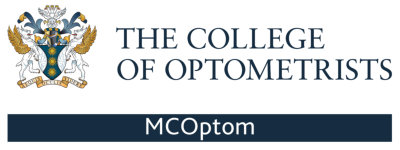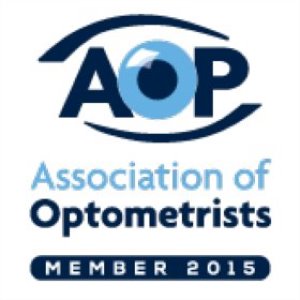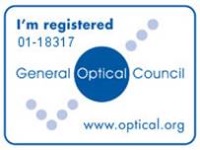Lazy Eye
We see lots of children aged 9, 10…15 all with one thing in common – a Lazy Eye. What does this mean?
During the vital visual development age of a child between 3 and 8 yrs of age, unless both eyes see exactly the same, a lazy eye is a possibility. The brain is busy allocating space for each eye to see. If both eyes see the same then both eyes develop normally. If however one eye requires more effort to see compared to the fellow eye, then the brain decides to give the Lazy, or not seeing as well eye, less brain processing space. This way one ends up with one super-doopa all seeing good eye, but a not so well seeing “poor vision” other eye.
A child does not realise this as being abnormal, that is all he or she knows as normal. If this is picked up at a visit to the opticians then all is not lost.
Corrective glasses and perhaps occlusion therapy (covering the good eye to allow the other poorer seeing eye to start working) is an easy solution to balance the eyes so both work together as nature intended.
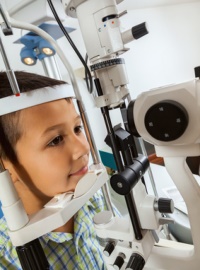 3D Vision
3D Vision
Growing up in a world with ever increasing use of 3D media presentations requires both eyes to see together. A person with a lazy eye will NOT have this ability to see 3D television and films.
With ever increasing use of this new technology why allow a lazy eye to spoil your child’s future? A simple check at the opticians will identify such problems and allow corrective measures to be put in place.
After around 8 years of age the chance of restoring 3D vision is severely restricted. Trying to correct a lazy eye later on in life can lead to intractable diplopia – or in simple English, permanent double vision!
Convergence
A child reaching high school years may start to complain of what we term 2 o’clock frontal headaches. A visit to the opticians will assess your child`s visual system. Maybe a corrective pair of glasses will do the job of alleviating the headaches? It may be that there is more to these headaches than simply wearing specs?
There is a common condition termed Convergence Insufficiency. This is when as the two eyes come together as a child looks up close, instead of both eyes focussing at a near close object such as a book being read, one eye drifts out. The brain does not like seeing double, as this is what happens if both eyes see a slightly different image of the same object, then eyestrain develops as the muscles try and pull the eyes together.
Giving simple eye exercises to strengthen these weak muscles will help overcome the problem and allow both eyes to start sharing the visual strain.
Regular eye checks at the opticians will help ensure you give your child the best start in life. Remember, if your little one refuses to wear his or her glasses to correct their vision during this crucial eye developmental stage, they will only blame you when they get older!
If you have any concerns at all over your children’s vision – or if they need their regular eye test – just contact us at Total Eyecare and we’ll be delighted to see them.
Squints
What is a Squint (or “eye turn”) – and how is it dealt with?
A squint (strabismus) is a condition where the two eyes point in different directions. 1 in around 20 young children are affected and they usually develop before a child’s 5th birthday, but do occasionally develop a little later than this. Squints tend to run in families.
It is vital that when a squint is first noticed that it is dealt with as soon as possible to prevent amblyopia, or a lazy eye. The child may be referred to the Hospital Eye Service to see an Orthoptist, a person who specialises in squint correction. This must be done before a child’s 7th or 8th birthday whilst their visual system is still developing and can be corrected. After this age it is more difficult, if not impossible to rectify.
One may often hear of a young child having an eye patch for a few hours each day over the good eye. This is to encourage the other not so good, lazy eye, to start catching up. This ensures that the child`s normal 3D vision develops naturally, for with two unequal eyes there is often little, or even no 3-D vision possible.
You may often hear of an older child having squint correction surgery. This will make the eyes look better cosmetically, but will NOT correct the lazy eye. That will be there for life.
When a younger child has this corrective surgery, the prognosis is quite different though. After corrective surgery in a toddler, providing there is compliant patching, there is a good chance of correcting a lazy eye and giving the child normal 3D vision. This is why ALL children should have an eye test as they start normal infant school, or earlier if a squint is noticed.
Of course if you have any concerns about your child’s eyes, make an appointment to visit us; will start with a thorough eye examination and then discuss any issues we find and how they can be dealt with.
